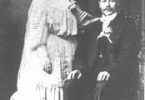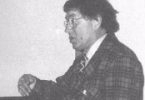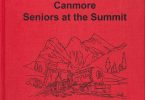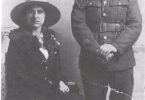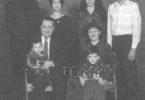Frank Kernick was born in St. Mary’s, Ontario, one of ten children of James Kernick from Penryn, Cornwall County, England and Sarah Carter from Tipperary, Ireland. They came to Middlesex County, Ontario in 1844.
He farmed in Burk’s Falls until coming west in 1920 to farm in Irricana. He married Georgina C. Marr of Sussex, N.B. on December 25, 1923. She was a school teacher who was employed in Irricana at that time. Frank and Georgina Kernick had two children: John (Jack) Franklin and Donald James.
John had three children by his former wife Evelyn Plaster:
- Deborah Lynn, born September 8, 1961 is a school teacher in Vancouver.
- Franklin John, born December 3, 1962, married Lorraine Helston, (born July 23, 1960, who is also a school teacher.) Frank is a professional engineer who is a self-employed land developer in Canmore. His current project is the Eagle Terrace subdivision. They have three children: Kayla Rae, born December 5, 1987; Aimee Larissa, born July 21, 1989 and Kristopher John Franklin born March 27, 1992.
- Brian Robert, born December 11, 1969 is a professional engineer and also has a Masters Degree in Business Administration. He is presently employed in Australia.
John is now married to Simone de Champlains.
Donald married Helen Schmidt July 19, 1969. Helen is a school teacher who taught in Calgary and then in Canmore. They have two children:
- Bradley Donald, born November 29, 1970 married Wendy MacWilliams (born June 21, 1969). They were married May 1, 1998 and have twins, born June 18, 1999, a boy, Ryan Bradley, and a girl, Taylor Rae. Bradley has a B.Sc. in Computer Science and has his own company known as Poseidon Computer Consultants. Part of his work at present is doing some administration work and teaching an internet computer course at Columbia College.
- Corrie Lynn was born on May 27, 1975. On August 14, 1999 she married David Graboski, a pharmacist. They are currently living in London, Ontario where Corrie is studying medicine at University of Western Ontario.
Frank and Georgina Kernick bought the Canmore Dairy from the Pendergast family in 1926. This included twenty-eight acres of land, a herd of cattle, two teams of harness horses, and a few saddle horses, a house with an attached bunkhouse, a building partially built out over the creek which served as a milk house, and a large 40′ x 50′ barn, corrals, fences, etc. The milk was put into cans and these were put in the creek which prevented freezing in the winter and provided cooling in the summer. The Canmore Dairy (Kernick’s) was one of four dairies in Canmore at that time. The others were Shellian’s, Anderson’s and Davidson’s. The Canmore Dairy delivered milk door to door every day of the year with a Bennett wagon in the summer, or a sleigh in the winter. The Canmore Dairy wagon was totally wrecked in 1945 and all the milk bottles were broken when the Kernick horse was left unattended across the road from Marra’s store. The horse was stampeded by two large work horses belonging to Mr. Jim Fitzgerald Sr. Milk was then delivered with a Ford coupe with a box built in the trunk, as there were no half-ton trucks available at that time, due to the war.
Mr. Fitzgerald was the sole employee of the Municipality of Canmore. He did all the maintenance work and also kept the maps and records for all roads, lots, etc. of the land east of the Bow River, which was known as Townside. Sale of any property, inquiries and any other information all went through the Provincial Government in Edmonton. His residence was on the main street, directly across from Horbay’s Clothing Store. His barn for his horses, and yard for wagons, etc. was on the corner site in the lane directly behind the N.W.M.P. Historic site. He hauled cinders which had been dumped from the coal-burning locomotives, in a horsedrawn wagon from beside the C.P.R. track. He also had a ‘honey wagon’ which was used to empty septic tanks.
The C.P.R. had a storage building for coal and a water tower to service all the trains going east or west, as all the locomotives were steam driven. These were located by the tracks which are behind the now-present Bear Country Inn.
Cattle and horses were allowed to roam anywhere in Canmore until about 1950 as there were no grazing laws. People had to fence their yards in and many a good garden disappeared if their gate was left open. Animals such as herds of elk, a few deer and moose, bears, coyotes, cougars and other wildlife lived, and were seen in the valley. A large variety of birds were in our forests and bushes. Beaver, muskrat, otters, fish, frogs, and ducks were in the creeks. All insects were abundant! Today most of this wildlife, plus coloured rabbits still live in the valley. Some may not be as content as before, but I feel they will remain here, unless someone, or some people insist they be removed.
The cattle were sold in 1947 and then milk was brought in from Calgary, bottled and delivered here. The dairy business was sold soon after. The barn was torn down in 1949. This was located on what is now the road directly in front of the Restwell office. Corrals and fences were also removed from the front area at that time.
Restwell Cabins was started by the Kernick family in 1949 and consisted of four cabins with electric service only, plus two outdoor dry toilets (family size), one for each, ladies and men. A new full-serviced building containing washrooms and laundry was built in 1950. In 1952, the four cabins were relocated onto new foundations with water and sewer services. They were remodelled completely and full bathrooms added.
Two power poles, with a cluster of four electrical outlets on each, were erected in 1954 in a nearby field, for parking mobile homes. They were supplied electricity only and had the use of the washrooms and laundry, which had previously been built. Fourteen fully serviced sites – water, sewer, electricity and telephone, along with another washroom and laundry building were completed in 1957. The sites were 35′ x 50′ which was more than adequate as the largest mobile home at that time was 10′ x 40′. Mobile home site rent at that time was $25.00 per month.
More land has been bought through the years, with the present mobile home park being developed by the Kernick Brothers in stages or blocks, as the need would arise.
Today, Restwell is a four star, fully modern park, with 220 mobile home sites, 250 R.V. sites, six service buildings with washrooms and laundries, and also five fully modern equipped cabins. There are also two large residences, a large well equipped maintenance shop and garage, storage building and various service vehicles.
The total occupancy of the park, on a day in July, 1999 could exceed 1,500 people. The total population of the Municipality of Canmore in 1927 was about 1,200 people.
Restwell is situated on sixty-five acres of land mainly between Spring and Policeman’s Creeks where the old Canmore Dairy was located. The land has never been subject to flooding. The park entrance is only one block off Main Street or the business section in downtown Canmore, which is about a five minute walk.
Jack and Don are still the owner/ operators of Restwell. Jack’s eldest son Frank, also resides in Canmore with his wife and family. Their children are the third generation of Kernicks residing in the Bow Valley as of December, 1999.
I have seen this town go from cinder roads, no sidewalks and outdoor toilets to the development of today. I believe some orderly new development is necessary to maintain a vibrant and exciting environment. We need new, young families to fill our schools, provide recreation and entertainment for all ages and also to provide the necessary services required to fill our needs in the future. Canmore is a tourist destination resort because of our beautiful mountains and valley. I hope this can remain as such and the real Canmore residents, the ones that were born and raised here, can find suitable employment and can afford to stay here. The part-time residents with the large homes used only on weekends, or for short periods of time during the year, do not contribute much to the daily schedule of events that are so important to the town and the town people.
This information was written by Donald J. Kernick who was born in Canmore on June 15, 1931 in the large house at 910 – 8th Street, now known as Heritage House, which was the hospital at that time. He went to school here and has been a resident and property owner all of his life.

Frank and Georgina Kernick, 1942
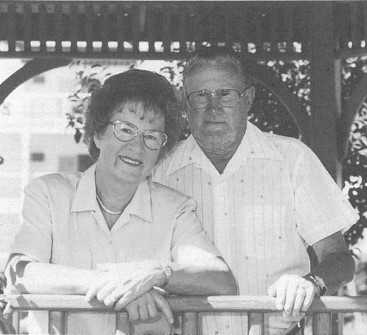
Don and Helen Kernick, 1999
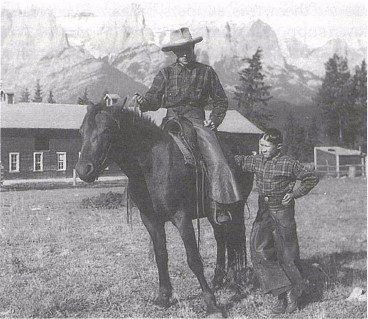
Jack and Don Kernick at the diary farm where Restwell Trailer Park is now

Jack and Simone Kernick, 1999
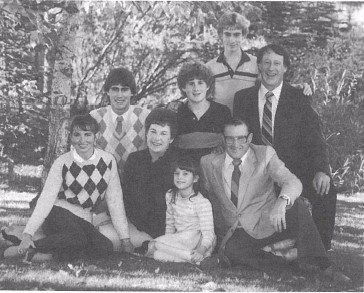
L. front Debbie, Helen, Corrie, Don Kernick L. back Frank, Brad, Brian and Jack Kernick
In Canmore Seniors at the Summit, ed. Canmore Seniors Association, 2000, p.143-146.

